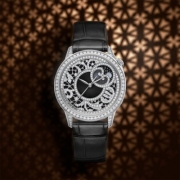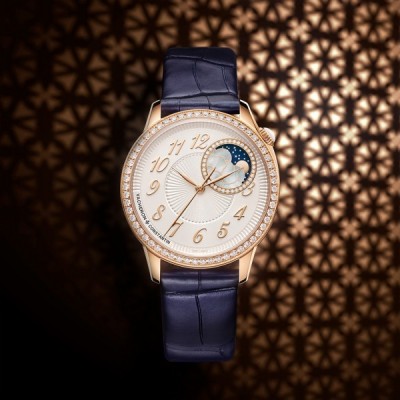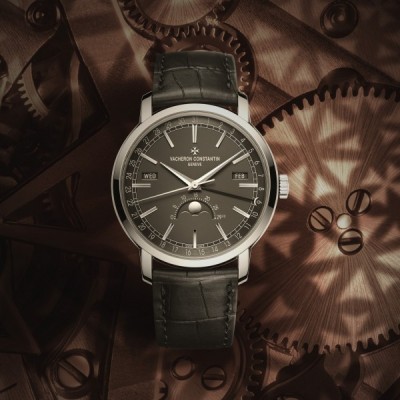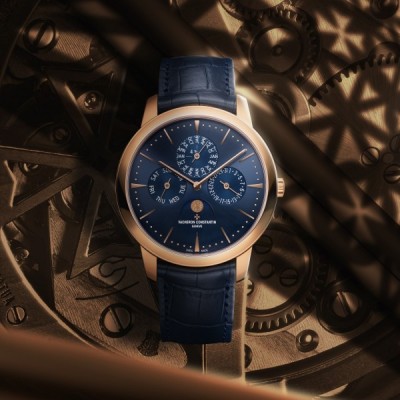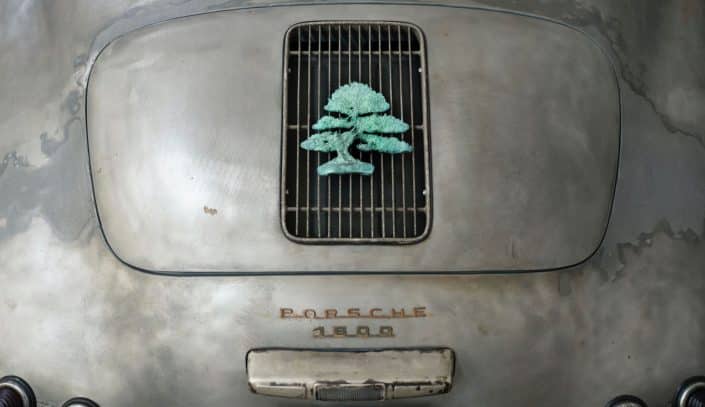Vacheron Constantin, the luxury Swiss watchmaking ‘Into The Light’ A tribute to the beauty of hidden details
March 22nd, 2023 – Vacheron Constantin, the luxury Swiss watchmaking Maison with nearly 270 years of expertise and continuous history, is delighted to announce its Ramadan 2023 tale, ‘Into The Light’. An illuminated journey bringing together Middle East culture and the Maison’s commitment to watchmaking excellence and finest craftsmanship.

Light is an ancient timekeeper with its dawns and dusks that marks the passage of each day. It is of particular importance during the Holy Month of Ramadan. Vacheron Constantin recognizes the tradition of timekeeping, honoring it with ‘Into The Light’.
The Tale
Celebrating timeless traditions in honor of the Holy Month of Ramadan, ‘Into The Light’ is both modern and inspired from the past. The tale transports viewers on a unique and beautiful journey into a traditional lantern, the ‘fanoos’. The lantern opens its door to reveal a hidden Arabian city located in the desert lit by the glimmering moonlight. Its buildings are inspired by iconic Islamic architecture found in different parts of UAE, Saudi Arabia, Qatar, Kuwait and Bahrain. Navigating through the city, viewers arrive in front of a door designed to resemble a watch caliber showcasing the incredible craftmanship and finishing of the timepiece. The caliber is seen shinning and the beautiful light that comes out of it starts to illuminate the entire city and bringing life under the night sky. Viewers are then transported back outside the city, all the way through the ‘fanoos’ door showing the lit lantern that projects a beautiful mashrabiya pattern on the walls, inspired from Islamic art, a beautiful symbol that reflects the spirituality and radiance of Ramadan.
As the light is being unlocked at the completion of the pattern, the viewer understands the strong correlation between Islamic architecture, artfulness of mashrabiya patterns, and elements of a Vacheron Constantin caliber. These three elements share a commonality that is their perfect geometry. Serving both functional and aesthetical purposes in a very harmonious way, the perfect geometrical patterns appear to be at the foundation of the heritage of the region and the Maison.
The Ultimate Ramadan Elegance with Vacheron Constantin’s timepieces
Égérie Creative Edition
The Égérie Creative Edition timepiece draws on the decorative craftsmanship that has been an integral part of the Manufacture since the early 19th century. It echoes the silhouettes of the 21st century. Its asymmetrical features including the off-centre moon-phase display and the case’s integrated crown set with a rose-cut diamond between 1 and 2 o’clock accentuate the delicacy of the “embroidered” dial swept over by three graceful hands specially designed for the watch.
Égérie moon phase
Haute Horlogerie instils the technical sophistication so dear to Vacheron Constantin and the legacy of the asymmetrical displays that have marked its history, while Haute Couture endows Égérie with style, magnificently refined shapes, attention to detail and delicate textures. Égérie moon phase jewellery is first and foremost an exceptional aesthetic appeal, a refined silhouette with an impeccable fit on the wrist. Available in three versions, A full diamond-set version: Égérie moon phase jewellery, A diamond-set dial and case version: Égérie moon phase diamond-paved and a new model with a flowing pink gold bracelet: Egérie moon phase.
Patrimony perpetual calendar ultra-thin
The Patrimony perpetual calendar ultra-thin watch beats to the rhythm of the legendary 1120 QP calibre, an ultra-thin selfwinding movement. With its sleek lines embodying quintessential elegance, this version treats connoisseurs to unrivalled contemporary refinement. The perpetual calendar complication requires miniaturisation prowess in that the movement must be mechanically adjusted to deal with calendar irregularities. This miniaturisation has been pushed to the limit in order to create an ultra-thin perpetual calendar, with Vacheron Constantin’s Calibre 1120 QP measuring a mere 4.05 mm thick.
Traditionnelle complete calendar
The classically inspired Traditionnelle complete calendar – with its stepped round case and lugs, fluted caseback and railway minute-track swept over by Dauphine-style hours and minutes hands – retains Vacheron Constantin’s signature touch of originality in the display of the calendar indications. The day and month windows are positioned around the rim of the dial, while the date is shown by a dedicated pointer. This layout particularly highlights a precision moon phase located at 6 o’clock. Powered by Calibre 2460 QCL/1, the Traditionnelle complete calendar watch features a 22K gold openworked oscillating weight with a design inspired by the Maison’s Maltese cross emblem, the movement visible from the back bears all the finishing touches one would expect from an Haute Horlogerie calibre.


